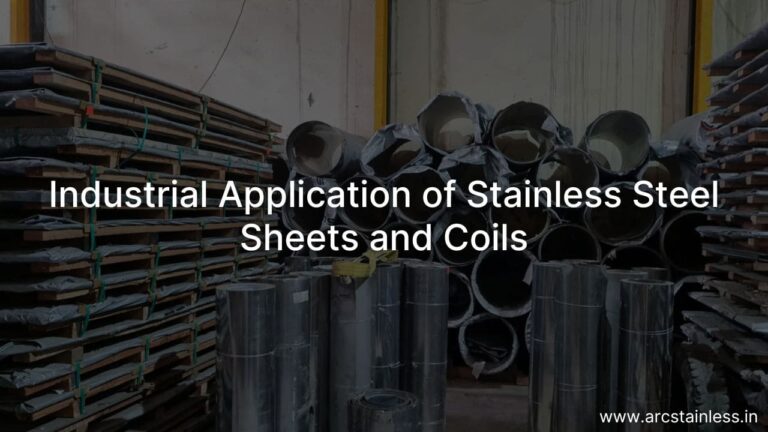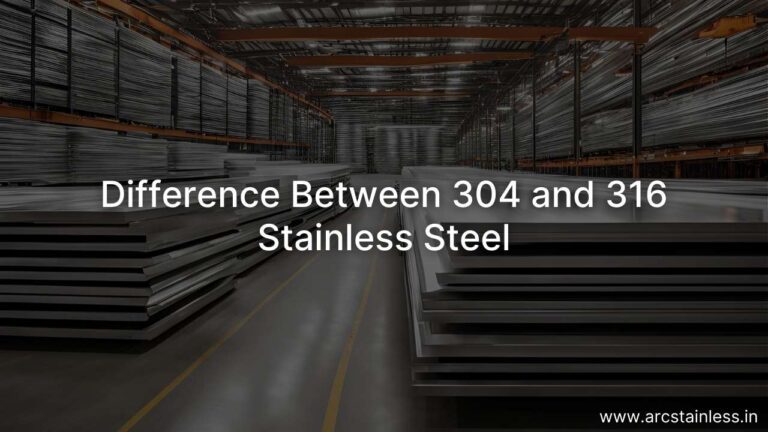316 Stainless Steel Properties
316 stainless steel is a prominent and widely utilized alloy known for its exceptional properties, making it a prime choice for a multitude of industrial applications. This article explores the extensive properties of 316 stainless steel, its composition, benefits, applications, and comparisons with other stainless steel grades.
What is 316 Stainless Steel?
316 stainless steel is part of the austenitic family of stainless steels. These steels are known for their non-magnetic properties and high corrosion resistance. This alloy mainly contains chromium, nickel, and molybdenum. The key difference between 316 and its predecessor, 304 stainless steel, is the addition of 2-3% molybdenum. This addition enhances corrosion resistance, particularly in environments with chloride.
316 stainless steel is commonly called “marine-grade” stainless steel because of its exceptional resistance to saltwater corrosion. This property makes it ideal for marine applications, chemical processing, and environments with harsh chemicals and corrosive elements.
Composition of 316 Stainless Steel
Understanding the composition of 316 stainless steel is essential to appreciating its properties. The typical composition includes:
- Chromium (Cr): 16-18%
- Nickel (Ni): 10-14%
- Molybdenum (Mo): 2-3%
- Carbon (C): 0.08% max
- Manganese (Mn): 2% max
- Silicon (Si): 1% max
- Phosphorus (P): 0.045% max
- Sulfur (S): 0.03% max
This unique composition contributes to the alloy’s remarkable properties, including corrosion resistance, strength, and ease of fabrication.
Key Properties of 316 Stainless Steel
1. Corrosion Resistance
One of the standout properties of 316 stainless steel is its exceptional corrosion resistance. The inclusion of molybdenum significantly enhances its ability to withstand various corrosive environments, particularly:
- Saltwater: This makes 316 stainless steel ideal for marine applications, such as boat fittings, marine hardware, and offshore structures.
- Acids: It exhibits good resistance to a variety of acids, including sulfuric and hydrochloric acid.
- Chlorides: Its superior performance in chloride environments reduces the risk of pitting and crevice corrosion.
The corrosion resistance of 316 stainless steel allows it to maintain its integrity and appearance even in challenging environments, making it suitable for a wide range of applications.
2. High-Temperature Resistance
316 stainless steel also excels in high-temperature applications. It maintains its strength and structural integrity up to approximately 870°C (1600°F) in continuous service and about 925°C (1700°F) in intermittent service. This property is crucial for applications such as:
- Heat exchangers: Used in power generation and chemical processing industries.
- Boiler tubes: Resistant to oxidation and scaling, making it suitable for high-heat environments.
- Aerospace components: Employed in parts subjected to high temperatures and stresses, ensuring reliability and performance.
The ability to perform in elevated temperatures ensures that 316 stainless steel remains a preferred choice in demanding applications.
3. Strength and Durability
316 stainless steel is recognized for its high tensile strength, which provides durability across various applications. With a tensile strength typically ranging from 70,000 to 80,000 psi and a yield strength of about 30,000 psi, it is stronger than many other stainless steel grades. This strength allows it to withstand heavy loads and impacts, making it suitable for structural components in demanding environments.
The durability of 316 stainless steel ensures a long lifespan, reducing maintenance and replacement costs. This characteristic is particularly beneficial in industries where reliability is paramount.
4. Ease of Fabrication
Another key advantage of 316 stainless steel is its ease of fabrication and welding. The alloy can be easily formed into various shapes and sizes, making it suitable for a wide range of applications. Key aspects of its fabrication include:
- Formability: 316 stainless steel can be cut, bent, and shaped into custom parts, allowing for intricate designs.
- Welding: 316 stainless steel can be welded with a low risk of cracking, making it essential for creating strong joints in structural applications.
- Machinability: Although 316 stainless steel is not as easy to machine as some other metals, it can be machined effectively with the right techniques and tools.
The ease of fabrication allows for efficient manufacturing processes and the creation of complex designs.
5. Hygienic Properties
Due to its smooth surface finish and non-porous nature, 316 stainless steel is easy to clean and maintain, making it suitable for applications that require high hygiene standards. Key applications include:
- Food processing equipment: Ensures safety and quality in food production environments.
- Pharmaceutical machinery: Meets strict hygiene regulations necessary for drug manufacturing.
- Medical devices: Prevents contamination and supports patient safety.
The hygienic properties of 316 stainless steel make it a preferred choice in industries where cleanliness is essential.
Applications of 316 Stainless Steel
Given its outstanding properties, 316 stainless steel is utilized in various industries and applications, including:
1. Marine Applications
316 stainless steel is commonly used in marine environments due to its exceptional corrosion resistance to saltwater. Typical applications include:
- Boat fittings: Such as cleats, winches, and rails, which require durability against harsh marine conditions.
- Marine hardware: Fasteners, hinges, and deck equipment that must withstand exposure to saltwater and other corrosive elements.
- Coastal architectural structures: Handrails, supports, and decorative elements used in seaside buildings.
2. Chemical Processing
The chemical processing industry often needs materials that can withstand corrosive substances. 316 stainless steel is a popular choice for:
- Storage tanks: For holding chemicals, acids, and other corrosive liquids.
- Pipes and valve: Essential for transporting chemicals safely and efficiently.
- Heat exchangers: Used in processes that require effective heat transfer while resisting corrosion.
Its ability to withstand a variety of corrosive environments makes 316 stainless steel ideal for these applications.
3. Pharmaceutical Industry
In the pharmaceutical industry, hygiene and contamination prevention are paramount. 316 stainless steel is used in:
- Manufacturing equipment: Such as reactors, mixing tanks, and storage containers that require stringent hygiene standards.
- Surgical instruments: Where cleanliness and corrosion resistance are critical.
- Pharmaceutical packaging: Ensures that products remain uncontaminated and effective.
Manufacturing equipment: Such as reactors, mixing tanks, and storage containers that require stringent hygiene standards.
Surgical instruments: Where cleanliness and corrosion resistance are critical.
Pharmaceutical packaging: Ensures that products remain uncontaminated and effective.
4. Construction and Architecture
- Structural components: Beams, columns, and supports that require durability and strength.
- Architectural features: Facades, handrails, and decorative elements that benefit from the alloy’s aesthetic appeal and resistance to corrosion.
- Bridges and highways: Elements that must withstand environmental factors while maintaining structural integrity.
Advantages of Using 316 Stainless Steel
The advantages of 316 stainless steel extend beyond its basic properties, making it a preferred choice for many applications. Key benefits include:
1. Longevity
316 stainless steel is designed to last. Its durability and corrosion resistance ensure that components made from this alloy have a long lifespan, which translates to lower replacement costs over time. This longevity is particularly valuable in industries where equipment failure can result in significant downtime and financial loss.
2. Aesthetic Appeal
With its bright, shiny finish, 316 stainless steel adds a sleek and modern look to any project. This aesthetic appeal makes it a popular choice for architectural applications and consumer products, where appearance is essential.
3. Recyclability
Stainless steel is 100% recyclable, making it an environmentally friendly option. When products made from 316 stainless steel reach the end of their life cycle, they can be recycled and repurposed, reducing waste and promoting sustainability.
Comparison with Other Stainless Steel Grades
1. 304 vs. 316 Stainless Steel
While both 304 and 316 stainless steels belong to the austenitic family and share similar mechanical properties, 316 stainless steel offers superior corrosion resistance due to its molybdenum content.
- 304 Stainless Steel: Generally less expensive and suitable for less corrosive environments.
- 316 Stainless Steel: Preferred for marine and chemical applications where exposure to harsh conditions is common.
This difference often dictates the choice between the two grades, depending on the specific requirements of the application.
2. Cost Considerations
316 stainless steel is generally more expensive than 304 stainless steel due to its higher alloy content. However, the increased durability and corrosion resistance often justify the higher upfront costs, particularly in applications where failure could result in significant losses.
Maintenance and Care of 316 Stainless Steel
While 316 stainless steel is known for its durability and corrosion resistance, proper maintenance is essential to ensure its longevity. Key care tips include:
Regular Cleaning: Cleaning surfaces regularly with a mild detergent and water can help prevent the buildup of dirt and grime, which can lead to corrosion over time.
Avoiding Harsh Chemicals: Certain chemicals can damage stainless steel. It’s essential to avoid using bleach or abrasive cleaners that can scratch the surface.
Inspecting for Damage: Regular inspections for signs of wear or damage can help identify potential issues before they become significant problems.
Conclusion
In conclusion, 316 stainless steel is an exceptional alloy with numerous properties that make it ideal for a wide range of applications. Its corrosion resistance, strength, and ease of fabrication set it apart from other materials, making it a preferred choice in marine, chemical, pharmaceutical, and architectural industries. Understanding its properties and applications allows manufacturers and designers to make informed decisions when selecting materials for their projects.








